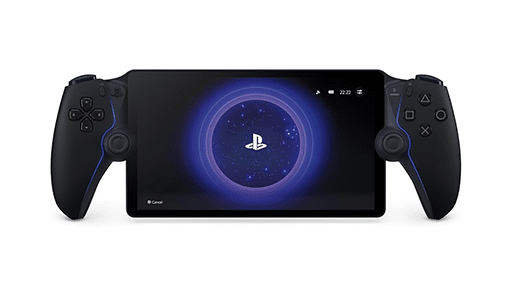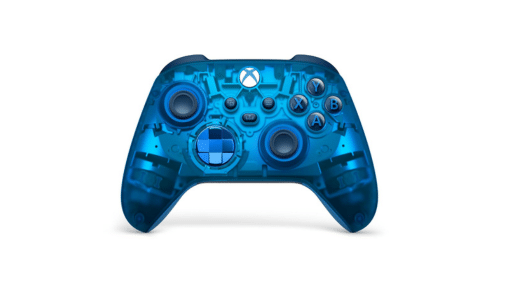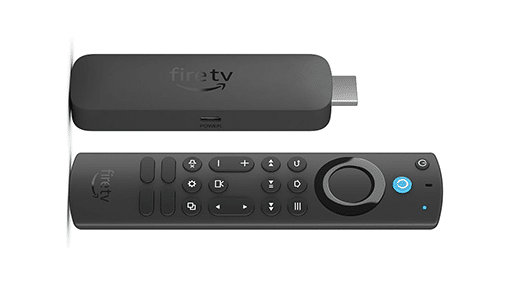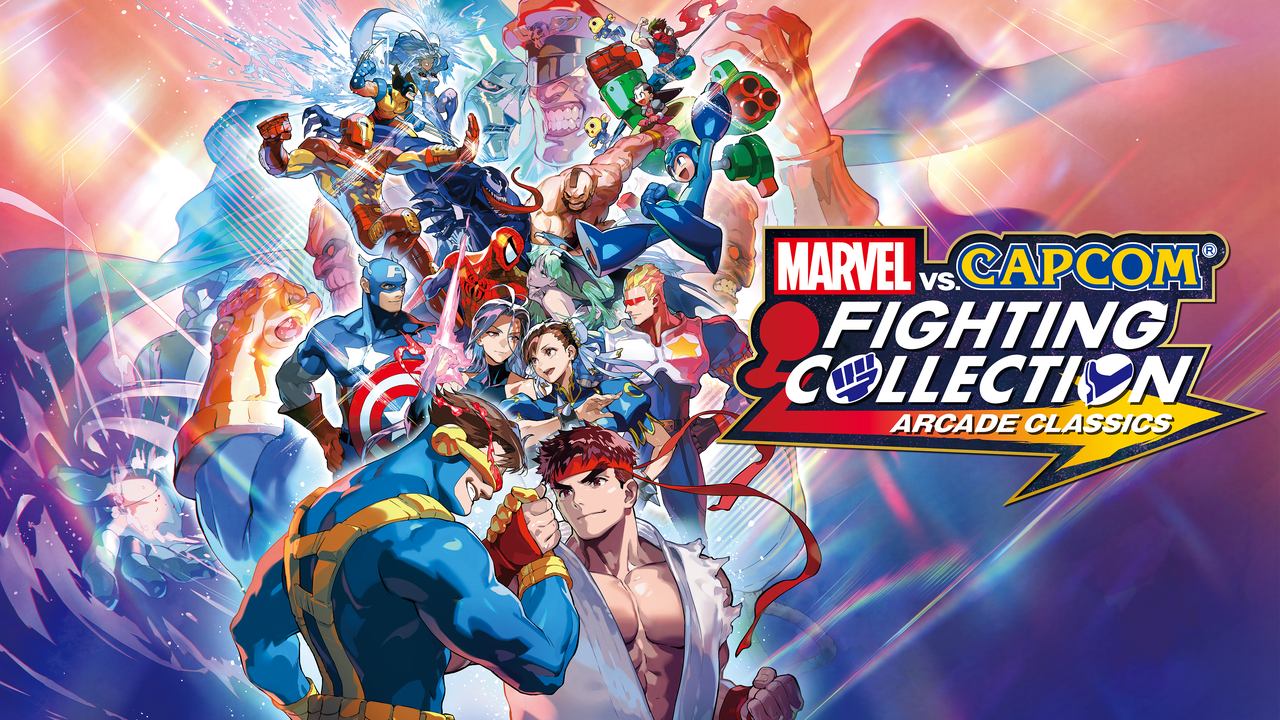
Capcom’s Marvel vs. Capcom series holds a legendary status in the fighting game world. From its beginnings in arcades to its influence on crossover titles, it has drawn generations of fans. The Marvel vs. Capcom Fighting Collection: Arcade Classics brings together seven games from the franchise’s history, offering a chance to revisit—or discover—the series’ roots.
With iconic characters, fast-paced gameplay, and quality-of-life features, this collection is more than a simple compilation. Whether you’re a longtime fan or a newcomer, it promises plenty of action. But does it truly capture the magic of the originals? Let’s find out.
A Breakdown of Fighting Styles
The Marvel vs. Capcom Fighting Collection spans decades of fighting game evolution, showcasing the mechanics that shaped the genre. To better highlight the progression of gameplay, I’ve grouped the included games by their defining features.
From the early innovations of X-Men: Children of the Atom to the groundbreaking team battles in Marvel vs. Capcom 2, each game contributes to this collection’s legacy. Let’s explore these titles by the gameplay mechanics and eras that made them iconic.
Pioneering Fighters
The foundation of this collection begins with X-Men: Children of the Atom and Marvel Super Heroes. These games introduced Marvel’s universe to Capcom’s polished fighting systems, combining Street Fighter mechanics with Marvel’s superpowered chaos. Children of the Atom brought verticality with Super Jumps and multi-tiered arenas, setting it apart from traditional fighters of its era. While the roster was small, each character felt distinct, offering powerful abilities tied to their Marvel origins.
Building on this, Marvel Super Heroes introduced the Infinity Gems mechanic, allowing temporary power-ups mid-match. This addition enhanced strategy, as players balanced standard moves with the use of gems for boosts in power or defense. Though dated compared to later entries, these early titles established core mechanics that laid the groundwork for the franchise’s success.
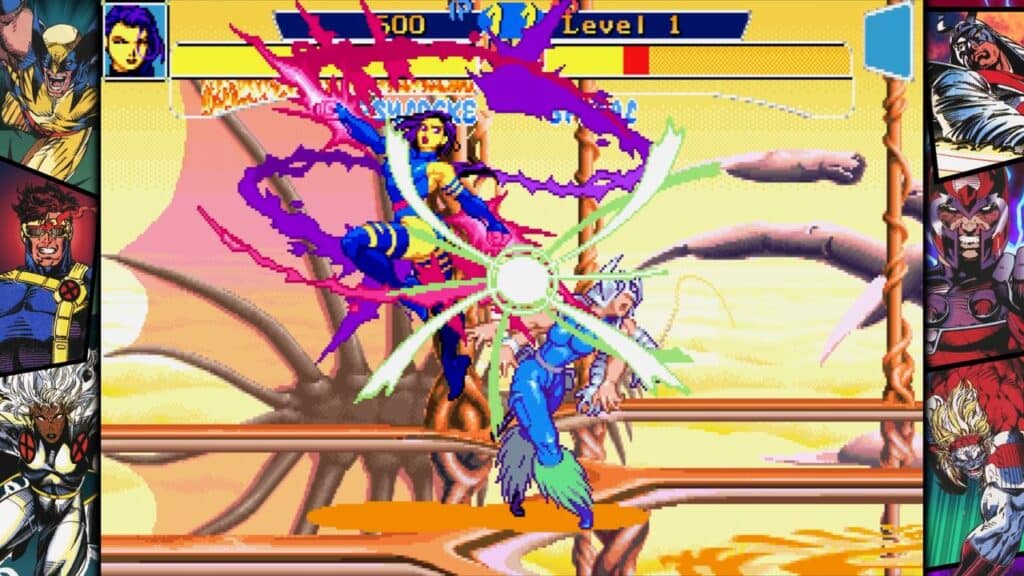
The Tag-Team Revolution
The transition to team battles began with X-Men vs. Street Fighter and evolved further in Marvel Super Heroes vs. Street Fighter. These games introduced the now-iconic tag mechanics, letting you switch between characters mid-match for combos and support. The addition of Variable Assist in Marvel Super Heroes vs. Street Fighter allowed partners to jump in briefly, adding new strategic layers.
Both games kept the fast-paced action of their predecessors but elevated it with new mechanics and a larger roster. X-Men vs. Street Fighter combined Marvel’s mutants with Street Fighter favorites like Ryu and Chun-Li. Meanwhile, its sequel expanded the roster further, adding a mix of Marvel and Capcom fighters for more variety. These innovations cemented the tag-team format as a defining feature of the series.
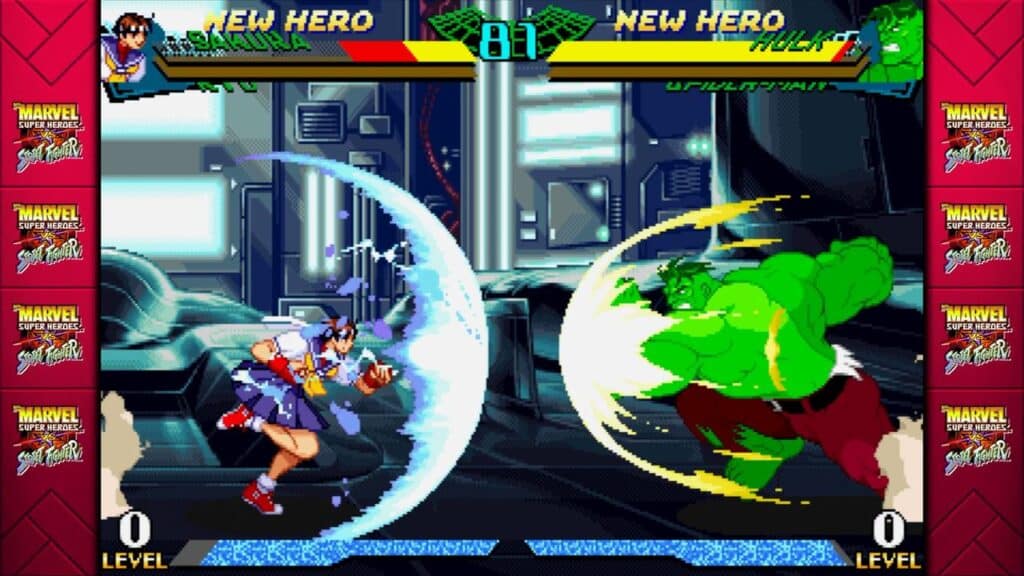
Marvel vs. Capcom’s Peak
The collection reaches its highpoint with Marvel vs. Capcom: Clash of Super Heroes and its sequel, Marvel vs. Capcom 2: New Age of Heroes. These games expanded rosters, refined mechanics, and pushed the series to new heights. Clash of Super Heroes introduced special partners for cameo attacks, blending chaos with accessibility. It also opened the door for Capcom characters beyond Street Fighter, including Mega Man and Captain Commando.
Marvel vs. Capcom 2 built on this with 56 characters and a new 3v3 team format. This setup added layers of depth and strategy, making every match unpredictable and rewarding. Though divisive for its controls, the game remains a masterpiece in gameplay variety and visual flair. Together, these two titles represent the series at its most ambitious and memorable.

The Outlier
Unlike the other games, The Punisher is a side-scrolling beat ’em up that stands out in this collection. Originally released in 1993, it features Frank Castle and Nick Fury battling through waves of enemies to take down the Kingpin. The gameplay is straightforward but satisfying, blending intense combat with vibrant comic book-style visuals. Each stage ends with a boss fight, adding variety to the experience.
While The Punisher doesn’t offer the complexity of the fighting games, it serves as a nostalgic trip to a different era of Capcom’s creativity. It’s a welcome addition that breaks up the fast-paced chaos of the core fighting games, offering a brief but entertaining change of pace.
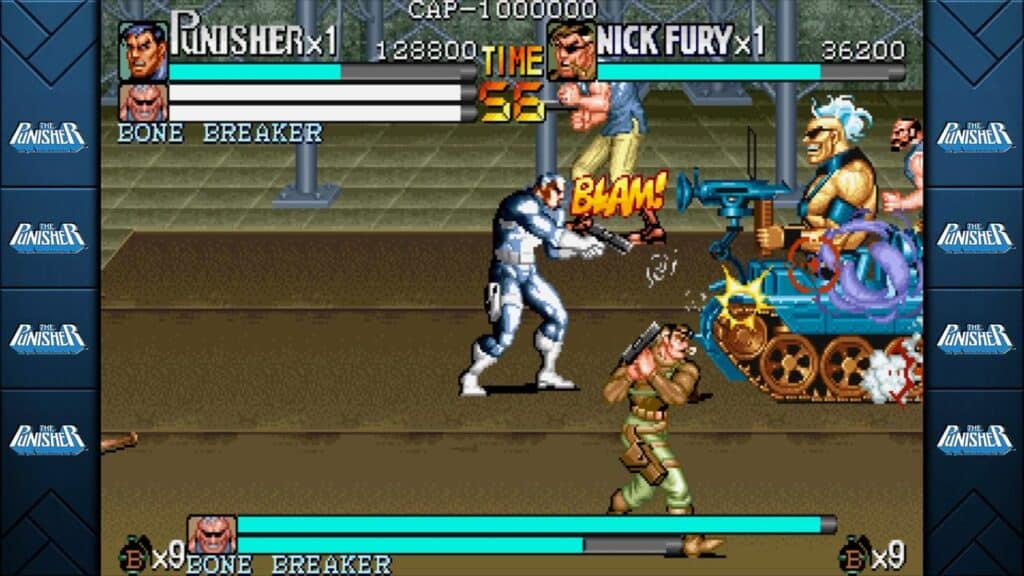
More Than Just Fights
The Marvel vs. Capcom Fighting Collection goes beyond gameplay with several features designed to enhance the experience. Each game includes options like display filters and overlays, letting you recreate the feel of an old CRT monitor or modernize the visuals. A Museum mode offers access to character art, storyboards, and a music player, giving fans a deeper look into the series’ development. For someone like me, who absolutely loved the design of the arcade cabinets, seeing these sketches was like uncovering a treasure chest of memories.
Save states are another welcome addition, especially for anyone, like myself, who struggled through grueling arcade difficulty back in the day. The ability to jump back to key moments instead of restarting is a lifesaver, especially when perfecting combos or facing a tough boss. The online multiplayer options—Casual, Ranked, and Custom matches—bring the games into the modern age. While crossplay would have been ideal, I still found myself nervously queuing up for a match, just like in the arcades.
Although the Museum mode could have offered more context, such as developer interviews or character trivia, the included features still add meaningful value. The collection balances nostalgia with accessibility, making it enjoyable whether you’re revisiting these classics or experiencing them for the first time.

Marvel vs. Capcom Fighting Collection Is a Nostalgic Celebration of Fighting Game History
The Marvel vs. Capcom Fighting Collection is more than a bundle of games; it’s a celebration of fighting game history. By compiling seven iconic titles, Capcom has created a nostalgic experience that also serves as a crash course in the genre’s evolution. Each game, from the foundational X-Men: Children of the Atom to the chaotic brilliance of Marvel vs. Capcom 2, showcases the innovation and creativity that defined its era.
What stands out most to me, is the care put into making these classics accessible to modern audiences. Save states, online multiplayer, and customizable visuals bridge the gap between past and present, ensuring the games feel timeless. As someone who spent hours glued to arcade cabinets, this collection brought back the excitement of those matches while giving me tools to appreciate the finer details I missed as a teenager.
That said, there are some missed opportunities. The Museum mode could have included interviews or deeper insights into the games’ development. The lack of crossplay limits the potential of online multiplayer. Despite these shortcomings, the collection delivers on its core promise: preserving and celebrating the legacy of one of the greatest fighting franchises.
Whether you’re a veteran of the arcade era or curious about what made these games so influential, the Marvel vs. Capcom Fighting Collection offers something for everyone. It’s a must-have for enthusiasts and a worthwhile addition to any fighting game library.
Marvel vs. Capcom Fighting Collection: Arcade Classics

Summary
The Marvel vs. Capcom Fighting Collection: Arcade Classics revives seven iconic games with modern features like save states and online modes. It showcases the evolution of Capcom’s crossover fighters, from X-Men: Children of the Atom to Marvel vs. Capcom 2. While extras like the Museum mode feel basic, the collection balances nostalgia and accessibility, making it great for fans and newcomers alike.
As always, remember to follow us on our social media platforms (e.g., Threads, X (Twitter), Bluesky, YouTube, and Facebook) to stay up-to-date with the latest news. This website contains affiliate links. We may receive a commission when you click on these links and make a purchase, at no extra cost to you. We are an independent site, and the opinions expressed here are our own.



